
László Moholy-Nagy was a brilliant artist, a great experimenter, and an outstanding art theorist
László Moholy-Nagy (July 20, 1895 – November 24, 1946) was a renowned Hungarian artist of the first half of the 20th century, an outstanding genius of the avant-garde. László Moholy-Nagy was a fervent advocate of integrating the latest industrial technologies into various cultural spheres, leaving a significant mark on the history of visual arts and cinematography. His work was highly appreciated by his contemporaries, and his biography is filled with interesting events and remarkable achievements.
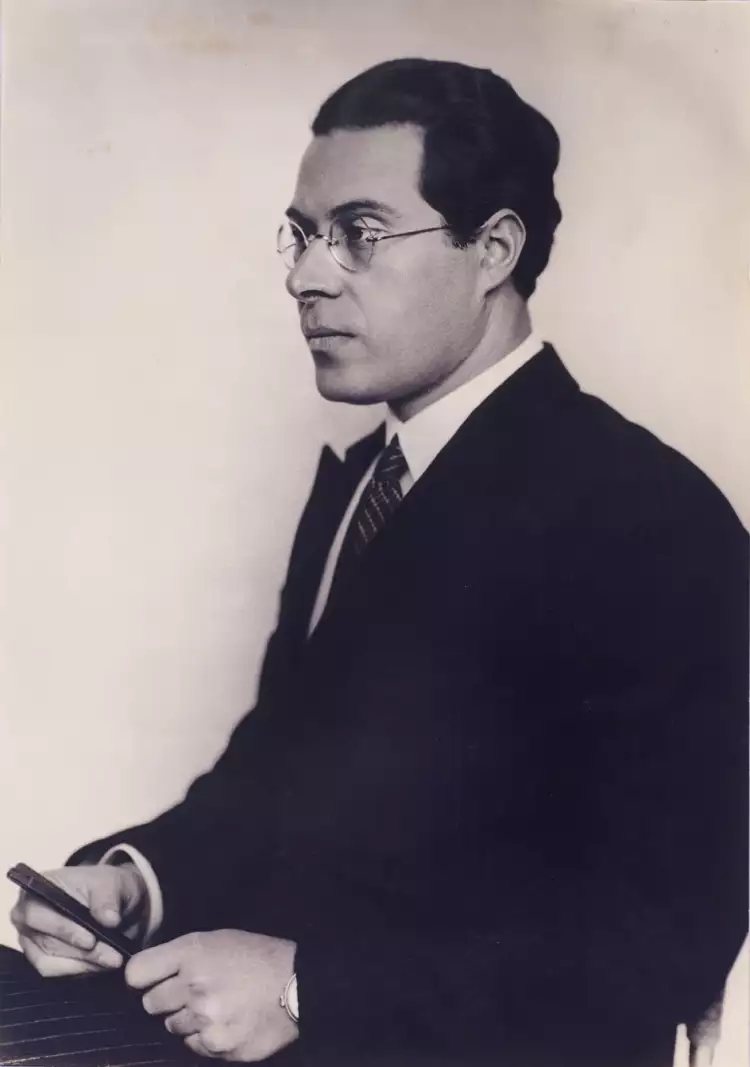 László Moholy-Nagy. Photographic portrait of the artist, 1930
László Moholy-Nagy. Photographic portrait of the artist, 1930
László Moholy-Nagy was also an authoritative art theorist and actively engaged in teaching for many years. A prestigious university in the capital of Hungary bears his name, and the master's greatest masterpieces are now housed in numerous museums in the United States and Europe.
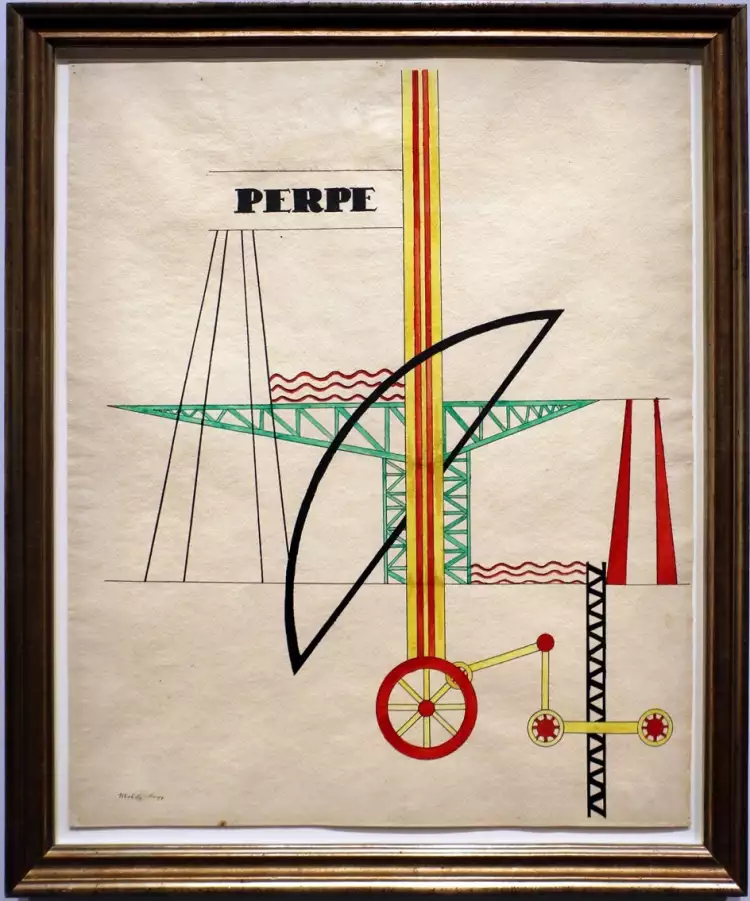 László Moholy-Nagy. Perpe, 1919
László Moholy-Nagy. Perpe, 1919
Biography of László Moholy-Nagy
László Moholy-Nagy (born as László Weisz) was born on July 20, 1895, into a prosperous Jewish family in the village of Bácsborsód, located in southern Hungary. When the boy turned five, his father left his mother with three young children, and they moved to live with his mother's brother, Gustav Nagy, an influential lawyer. It was in honor of this close relative that at the age of fifteen, László changed his surname to Nagy, later adding the prefix Moholy after the name of a city where he spent his childhood.
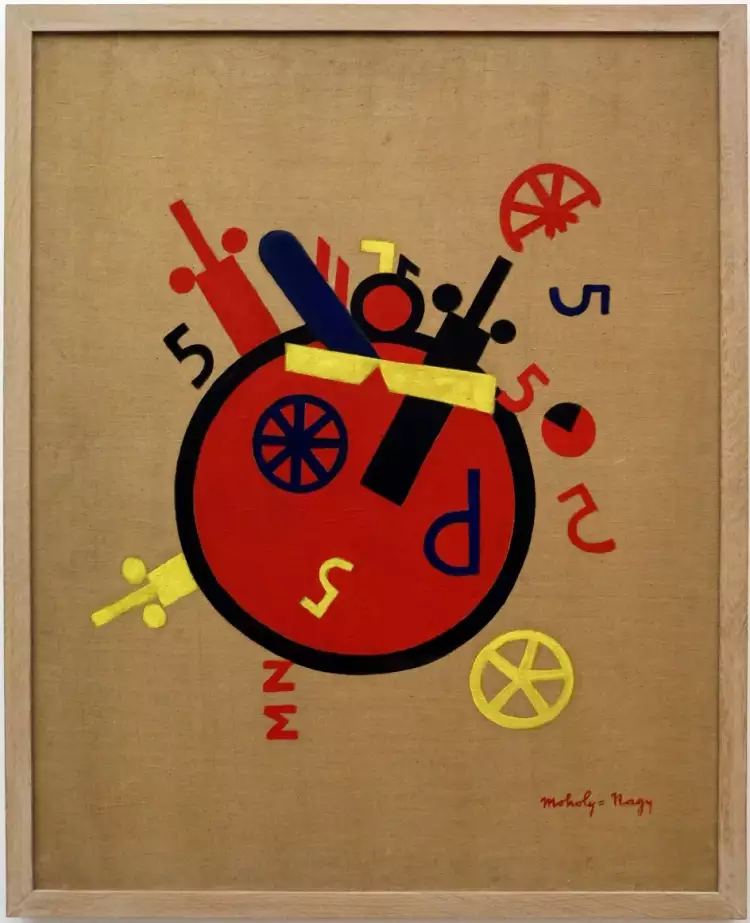 László Moholy-Nagy. Great machine of emotion, 1920
László Moholy-Nagy. Great machine of emotion, 1920
After finishing high school, László enrolled at the University of Budapest to study law, sponsored by his uncle. While still a student, the young Nagy began writing poetry, and some of his poems were published in the local newspaper. However, the carefree life of the young man came to an end soon after the start of World War I when he was conscripted into the Austro-Hungarian army. László was assigned the rank of junior officer and sent to the Eastern Front to serve in the artillery. It was during this time that he developed a passion for painting, creating sketches with charcoal and watercolors in his field notebook.
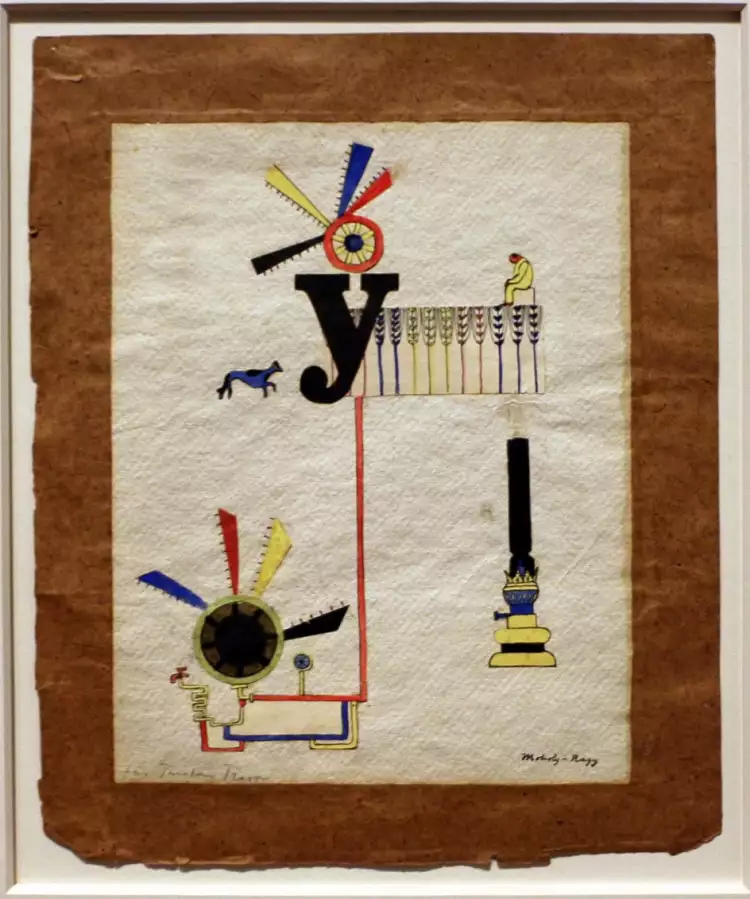 László Moholy-Nagy. Y, 1920-1921
László Moholy-Nagy. Y, 1920-1921
After the war, much to the disappointment of his uncle Gustav and his mother, László Moholy-Nagy did not return to university. In 1918, after resigning from the army, he enrolled in the private art school of Róbert Berény. During the socialist revolution, the young man briefly became interested in communist ideas but quickly became disillusioned with them and remained aloof from politics for the rest of his life.
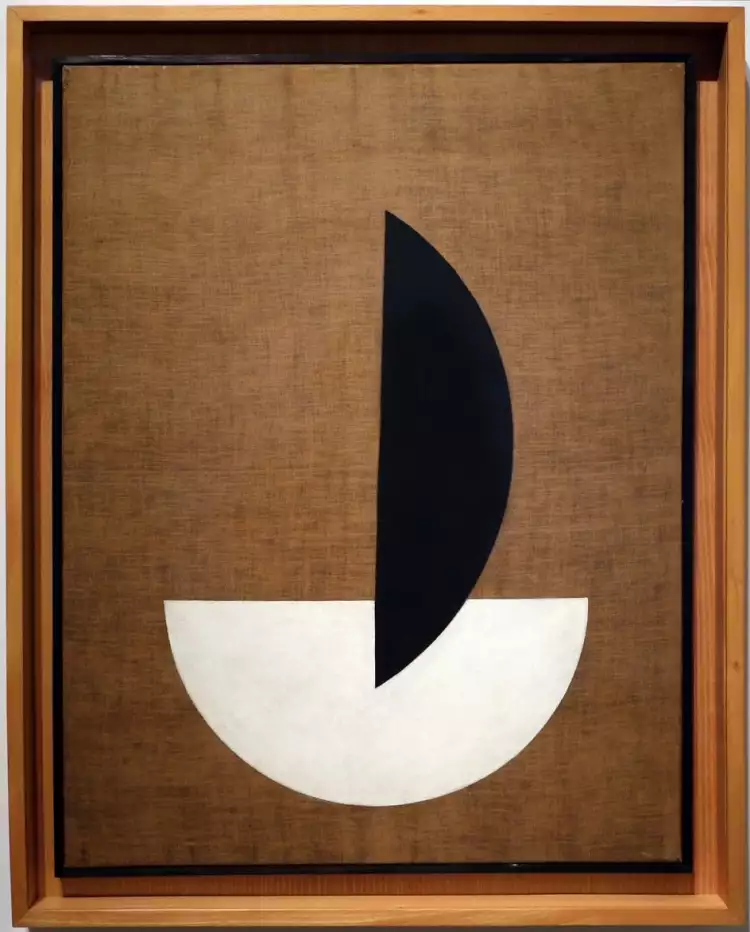 László Moholy-Nagy. Circular segments, 1921
László Moholy-Nagy. Circular segments, 1921
The artist's first exhibition took place in Szeged in November 1919, but the public and critics responded coolly to his works. Hurt by the cold reception, László decided to leave Hungary and moved to Vienna. He lived in the Austrian capital for a year before relocating to Berlin, where he met a young girl named Lucia Schultz. The young couple fell in love and soon got married. It was through his first wife that László became passionate about photography, and it was this form of visual art that later brought him worldwide fame.
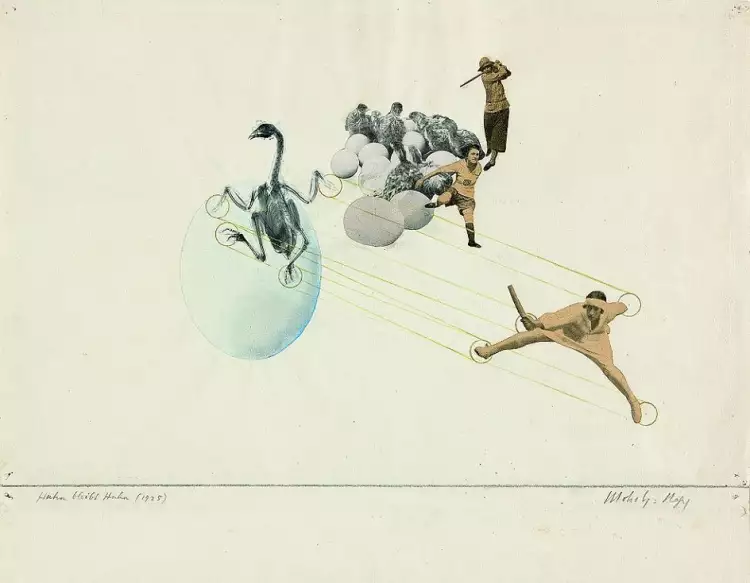 László Moholy-Nagy. Once a Chicken, Always a Chicken, 1925
László Moholy-Nagy. Once a Chicken, Always a Chicken, 1925
Even his first photography exhibition in 1922 was a resounding success. Critics praised the young artist, and he quickly became a favorite of the Berlin public, gaining many new friends among the city's bohemian circles. It was during this time that he met the influential architect Walter Gropius, who invited László to work at the recently opened Bauhaus school in Weimar.
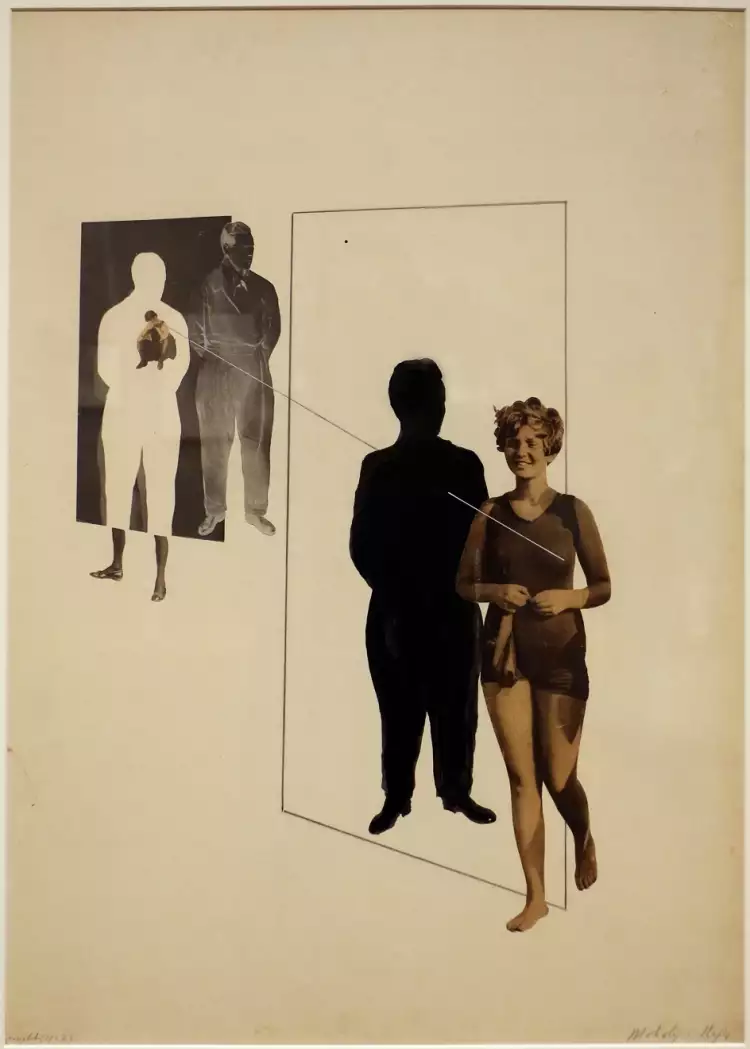 László Moholy-Nagy. Jealousy, 1927
László Moholy-Nagy. Jealousy, 1927
László Moholy-Nagy dedicated five years to teaching at the prestigious institution, during which he wrote several books on art theory and became one of the most respected professors. However, in 1928, the Weimar authorities stopped funding the school, and László, along with Gropius, resigned. It was also during this time that the artist divorced his first wife and returned to Berlin. In addition to painting and photography, he enthusiastically engaged in graphic design, theater set design, and even filmmaking, achieving significant success in these fields.
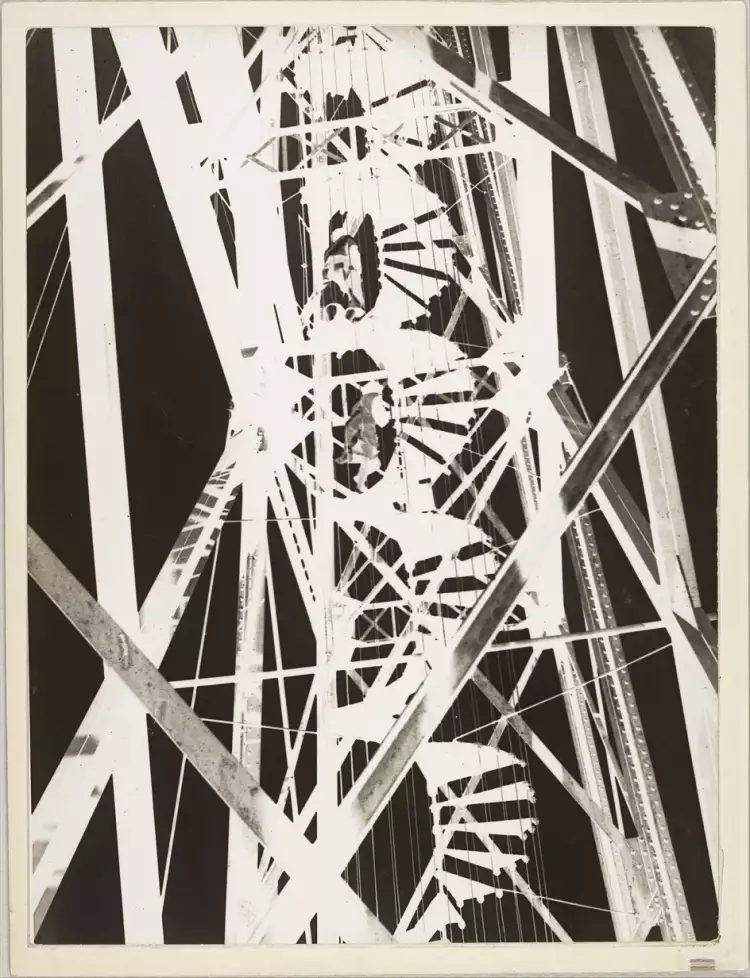 László Moholy-Nagy. Pont Transbordeur, Marseille, 1929
László Moholy-Nagy. Pont Transbordeur, Marseille, 1929
In 1931, László married for the second time to a German actress named Sybille Pietzsch. This marriage proved to be much more successful, and the artist had two beautiful daughters, Hattula and Claudia. However, with the rise of the Nazis to power in Germany, a harsh persecution of Jews began, and in 1934, Moholy-Nagy and his family moved to Amsterdam, and a year later, they settled in London. However, their stay in England was short-lived. In 1937, the artist received an invitation from his longtime friend Walter Gropius to head the New Bauhaus School in Chicago, and he and his wife set off for the United States.
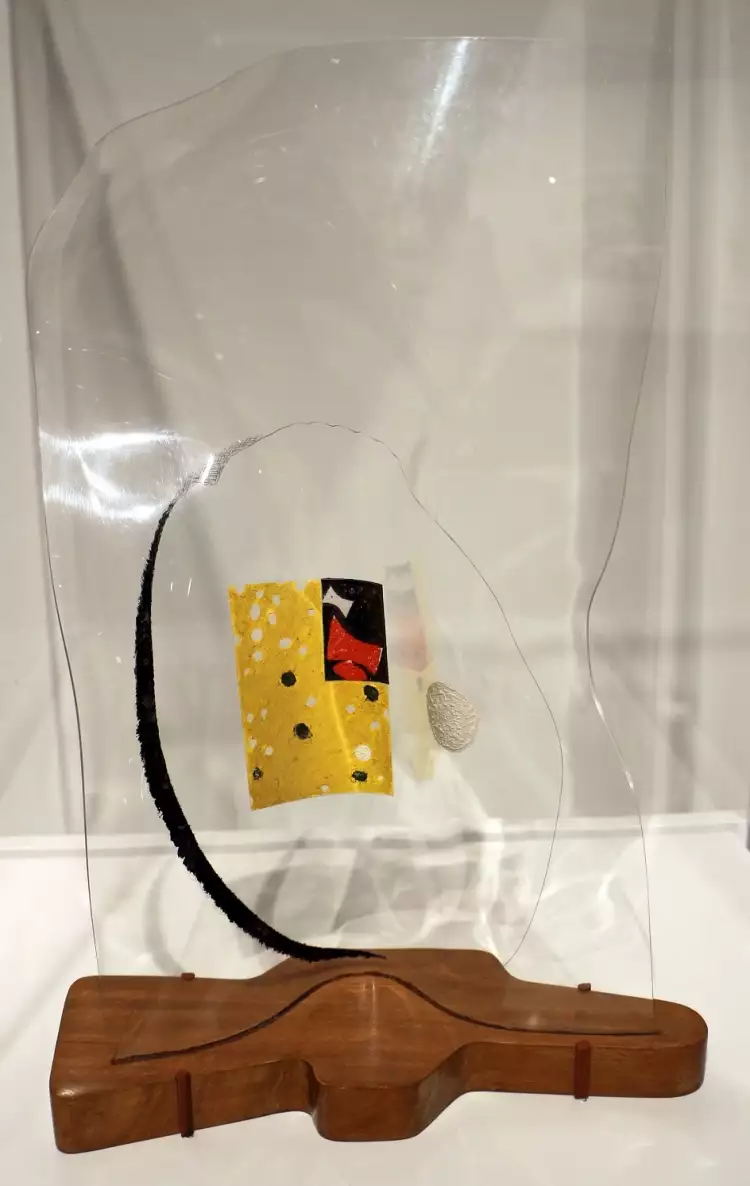 László Moholy-Nagy. Space modulator with evidence, 1942
László Moholy-Nagy. Space modulator with evidence, 1942
With exceptional business acumen, Moholy-Nagy quickly made valuable connections in America and secured generous funding for the educational institution. He became a highly successful director of the school and, in his free time, pursued photography, painting, graphic design, and industrial design. It seemed that László had a long and happy life ahead of him, but these dreams were not meant to come true.
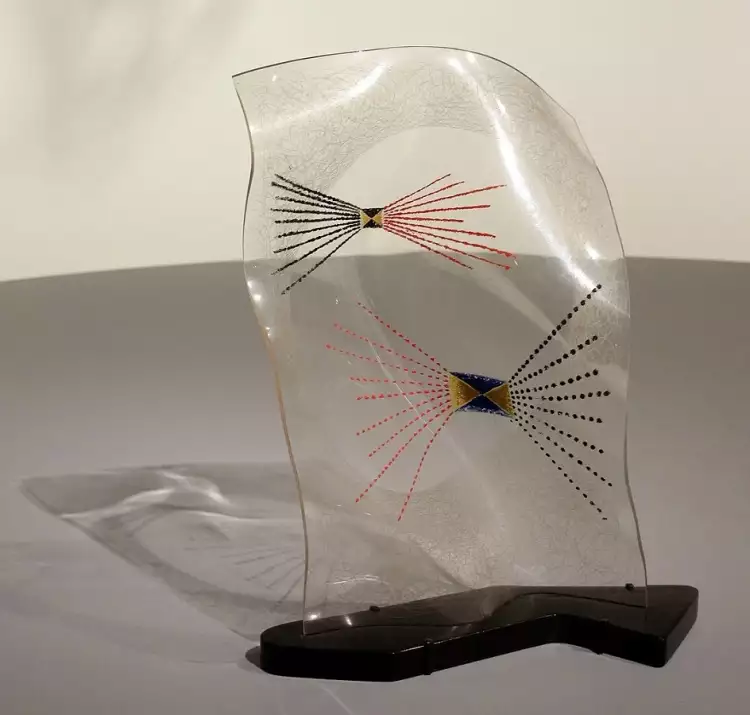 László Moholy-Nagy. Vertical black, red, and blue, 1945
László Moholy-Nagy. Vertical black, red, and blue, 1945
Shortly after the end of World War II, doctors diagnosed the master with a terrible illness—leukemia. Overcoming the pain, the artist continued to create and led the newly established Institute of Design, but the disease quickly ravaged his body. On November 24, 1946, László Moholy-Nagy passed away in his Chicago apartment and was buried in a local cemetery under a modest gravestone.
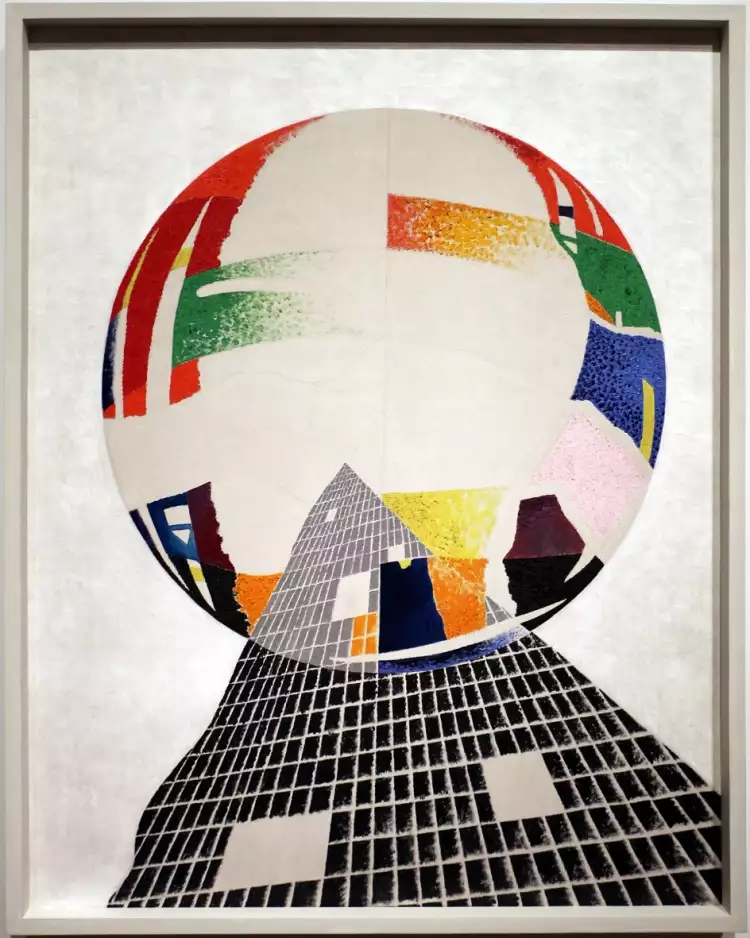 László Moholy-Nagy. Nuclear I, 1945
László Moholy-Nagy. Nuclear I, 1945
László Moholy-Nagy's Most Famous Works
The brilliant Hungarian artist left a rich creative legacy to future generations. Among the multitude of exquisite masterpieces created by the master, the following are particularly noteworthy as László Moholy-Nagy's most famous works:
- "The Great Machine of Emotions" (1920) - one of the artist's early works in the style of futuristic constructivism. On a regular canvas, the artist placed colorful symbols of technological progress that evoke various associations in the viewer.
- "Jealousy" (1927) - a masterpiece of photographic art created by the master from multiple photographs and a sheet of light cardboard. A woman in a swimsuit faces the viewer against the backdrop of a black silhouette of a man in a doorway.
- "The Space Modulator with Evidence" (1942) - an innovative work by the artist made of a piece of plexiglass and an unusual wooden object. Several colored symbols applied to the transparent glass give this artwork a particular enigmatic quality.
- "Revolving bars" (1946) - a masterpiece of kinetic art created by the genius shortly before his death. The rotating rods, dynamically attached to a light panel, are ready to be set in motion by the slightest breeze.
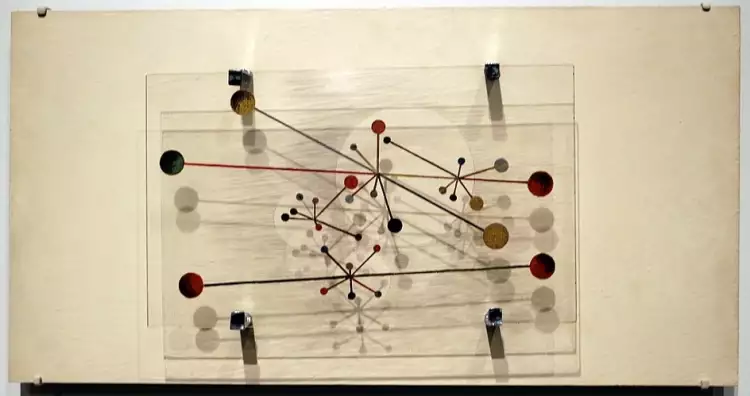 László Moholy-Nagy. Revolving bars, 1946
László Moholy-Nagy. Revolving bars, 1946
László Moholy-Nagy is rightfully considered one of the greatest avant-garde artists of the 20th century. He has gifted humanity with hundreds of unique works in the fields of photography, graphic design, and painting, which continue to evoke feelings of admiration in millions of people around the world.
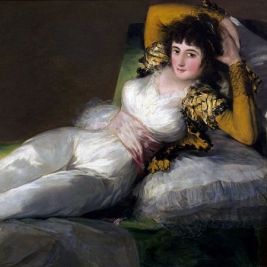 The painting "The Clothed Maja" by Francisco Goya is a delightful Spanish commoner in a provocative attire
The painting "The Clothed Maja" by Francisco Goya is a delightful Spanish commoner in a provocative attire  Birmingham silver - the beauty and elegance of small forms
Birmingham silver - the beauty and elegance of small forms  Glamour in photography is a beautiful genre with elements of elegance and luxury
Glamour in photography is a beautiful genre with elements of elegance and luxury  Still life is a genre of painting that perfectly reflects the artist's inner universe
Still life is a genre of painting that perfectly reflects the artist's inner universe 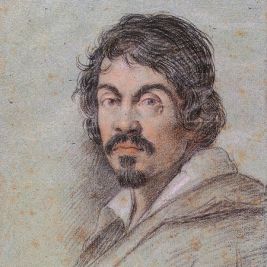 Caravaggio was a brilliant painter, an art innovator, and a thorough rebel
Caravaggio was a brilliant painter, an art innovator, and a thorough rebel 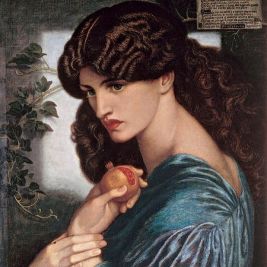 Pre-Raphaelites - the romantics of Victorian England
Pre-Raphaelites - the romantics of Victorian England 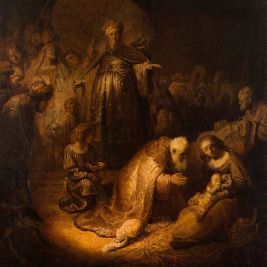 Grisaille is a unique monochromatic art with stunning possibilities
Grisaille is a unique monochromatic art with stunning possibilities 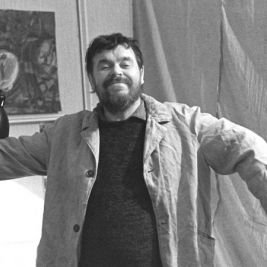 Anatoly Zverev — an unrecognized genius of the Soviet era
Anatoly Zverev — an unrecognized genius of the Soviet era 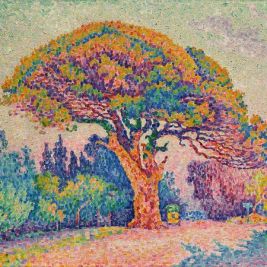 Post-Impressionism is a joyful and unconventional style in painting
Post-Impressionism is a joyful and unconventional style in painting 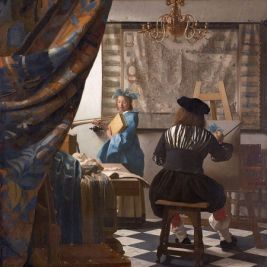 An artist is a tireless creator of masterpieces of art
An artist is a tireless creator of masterpieces of art